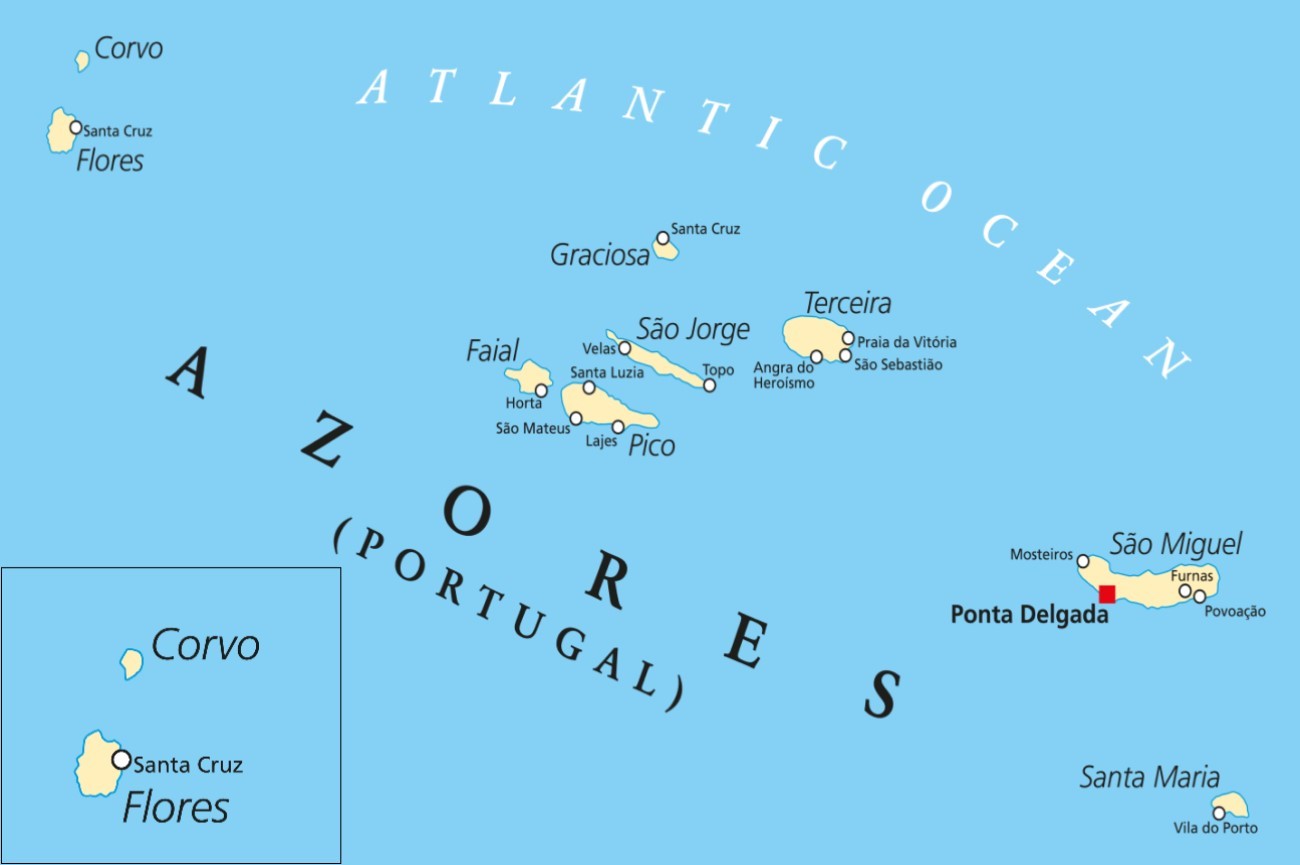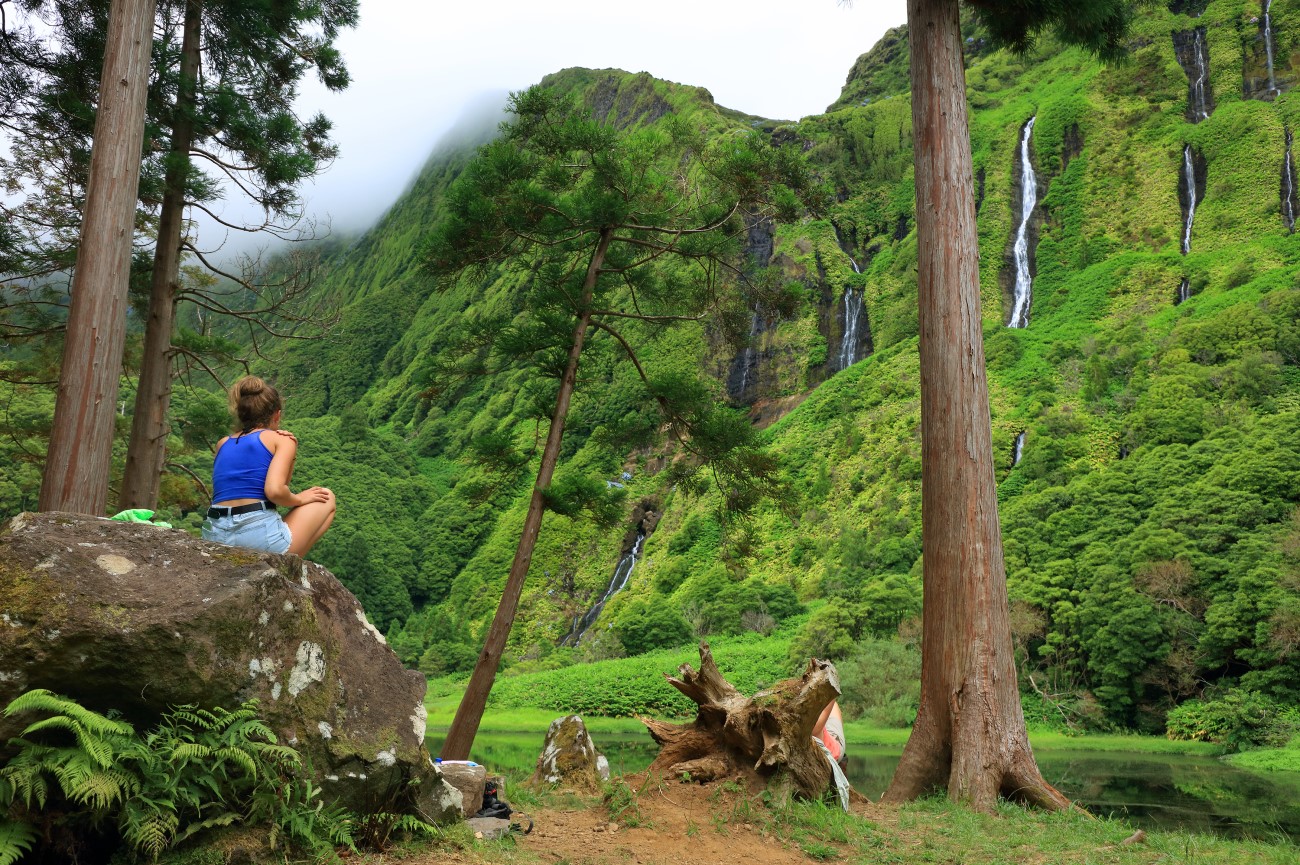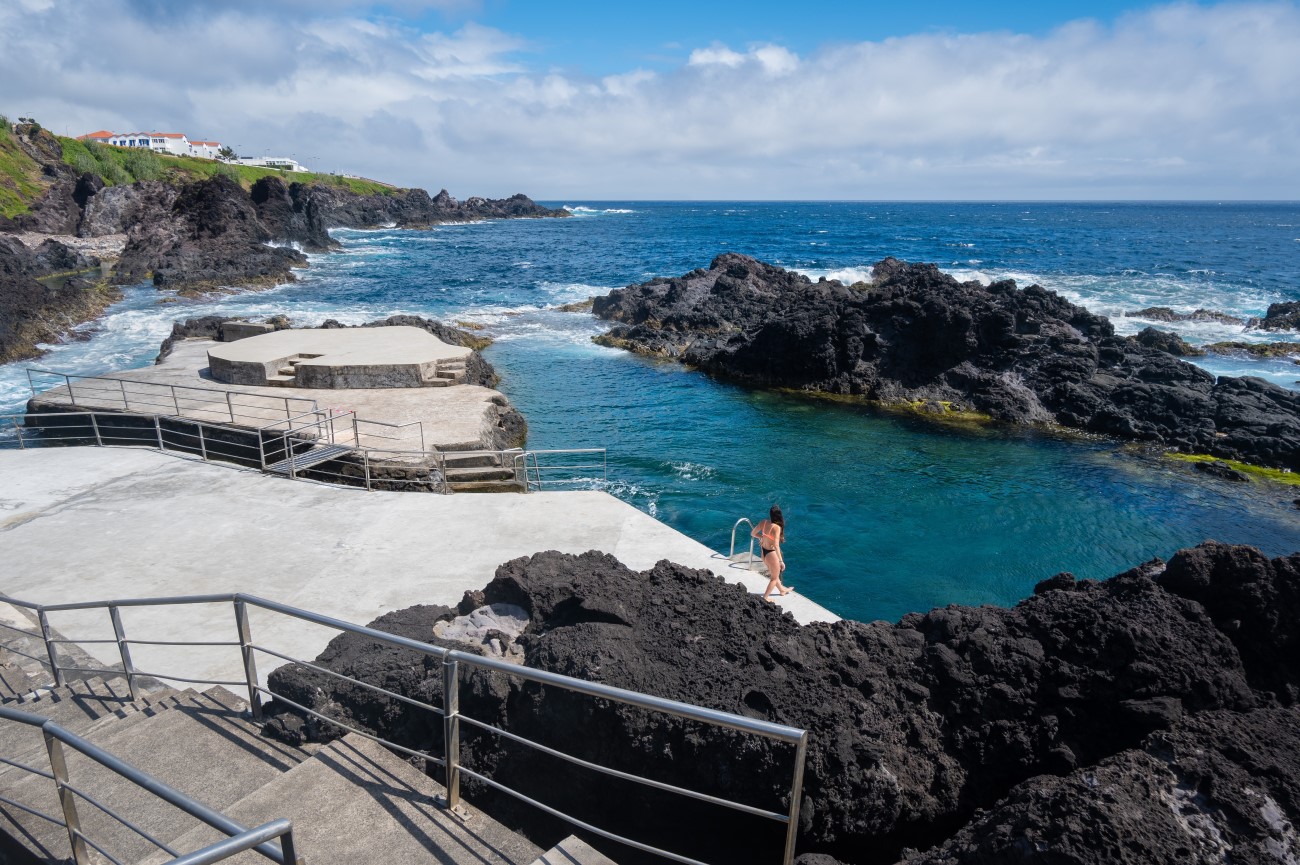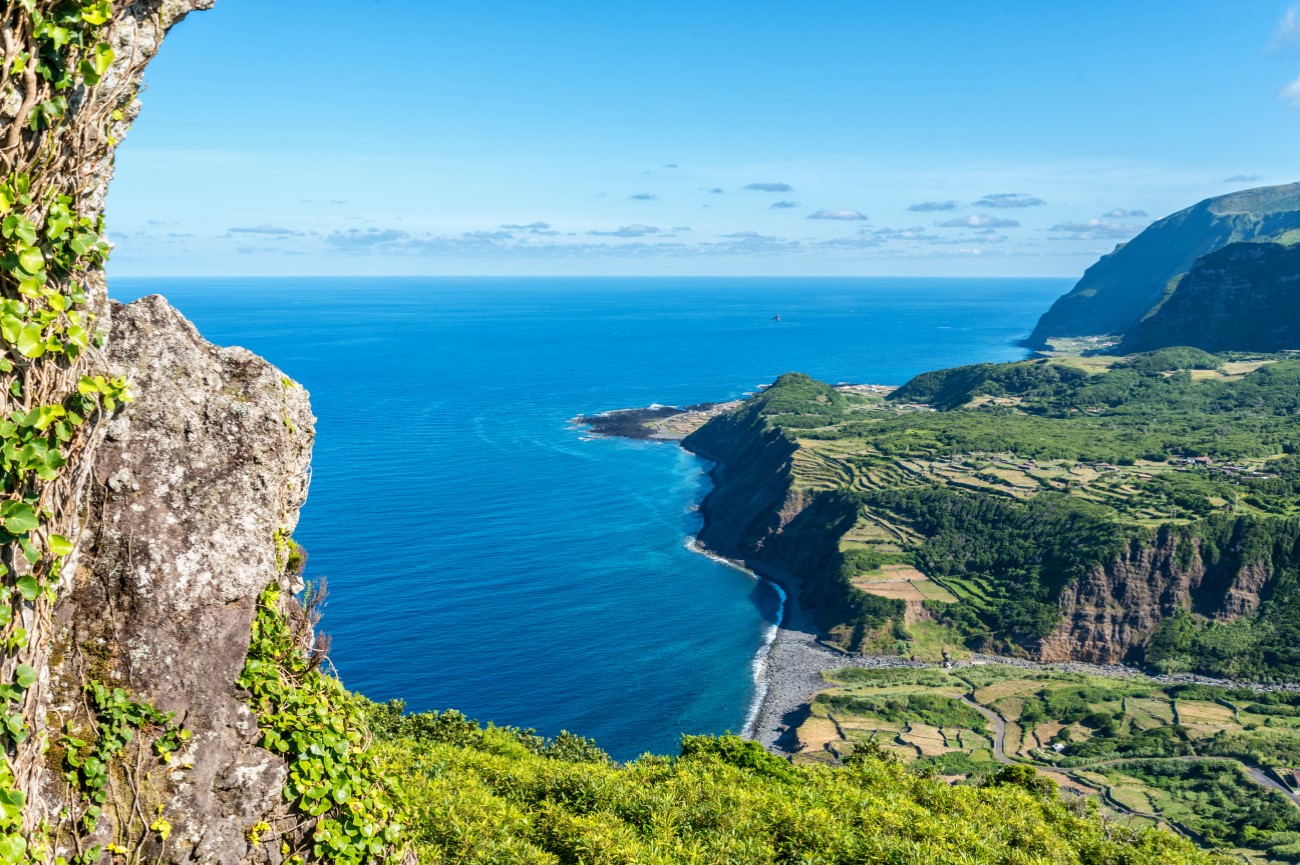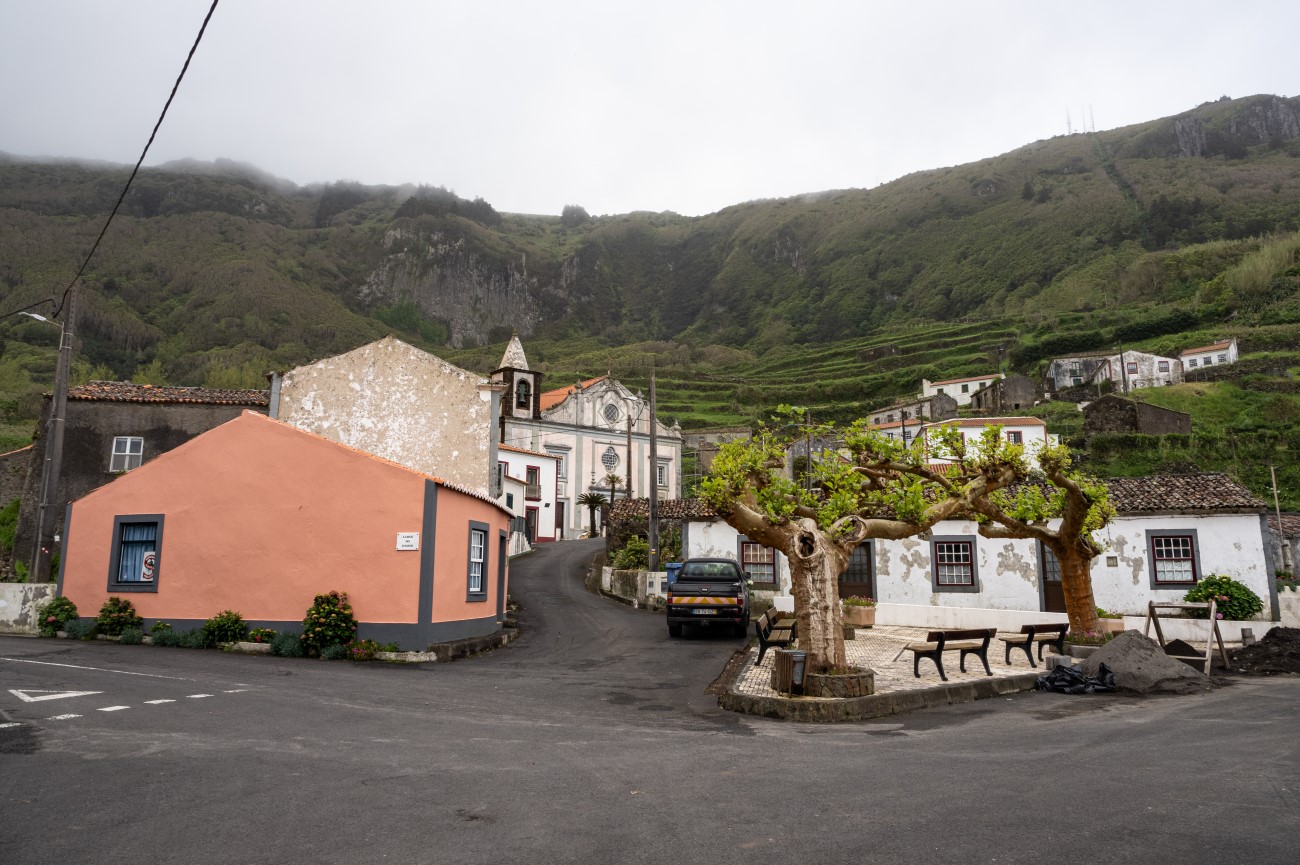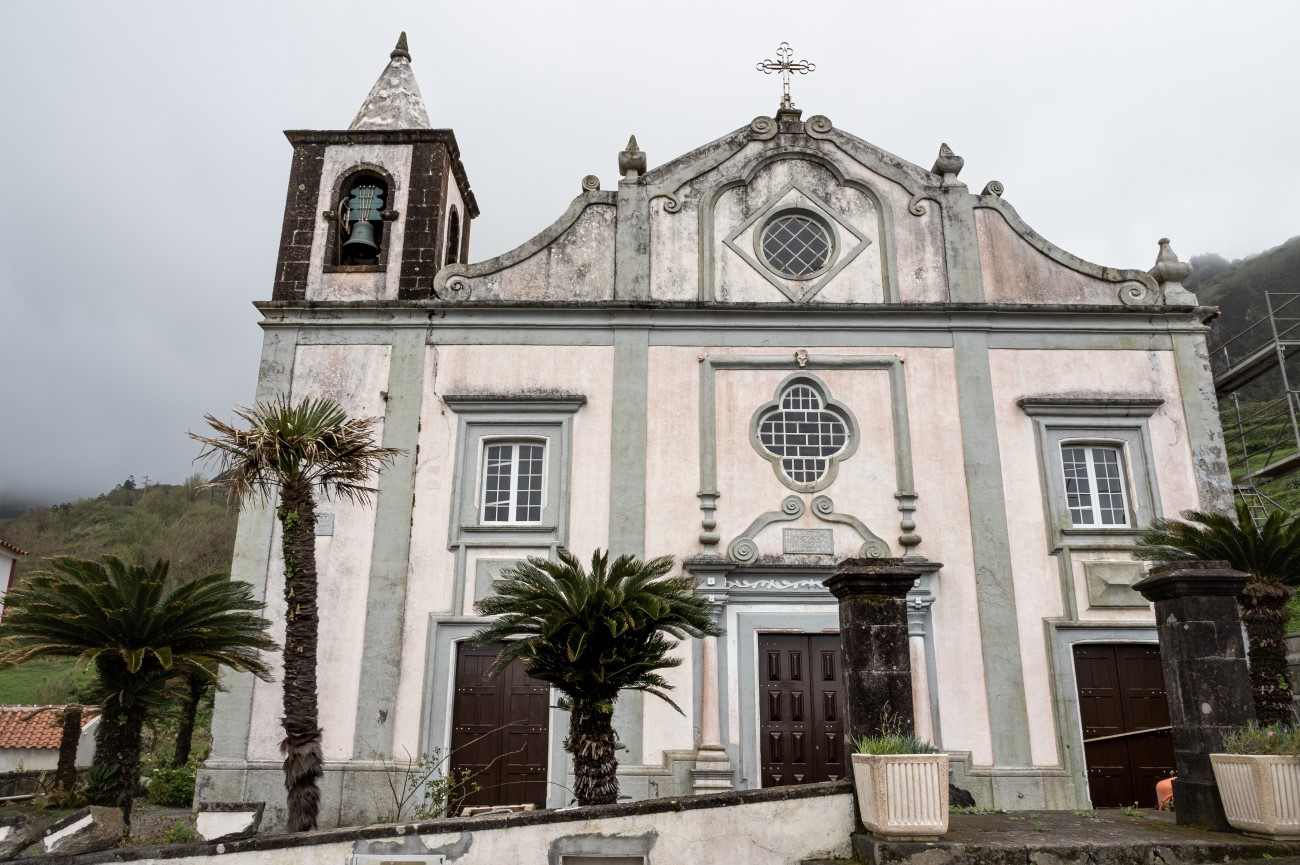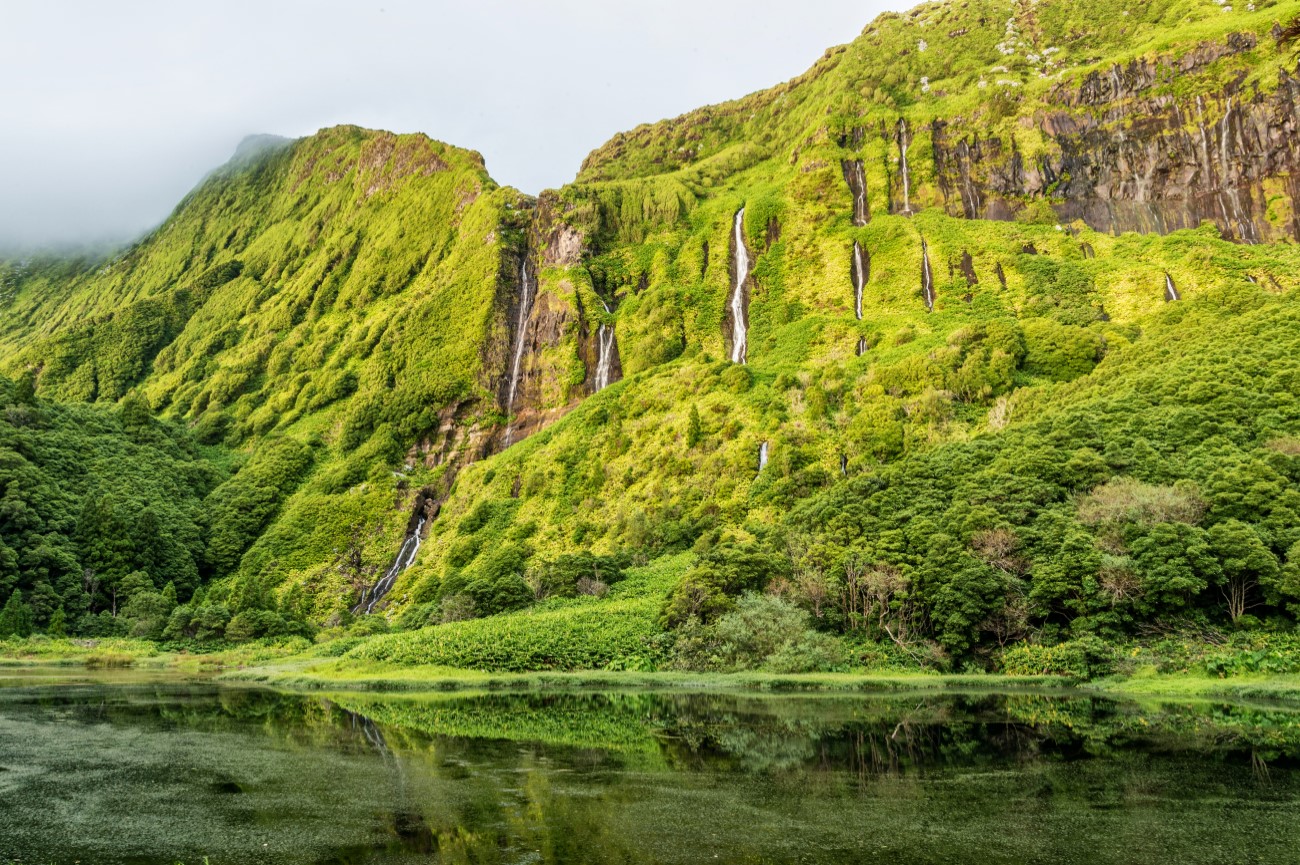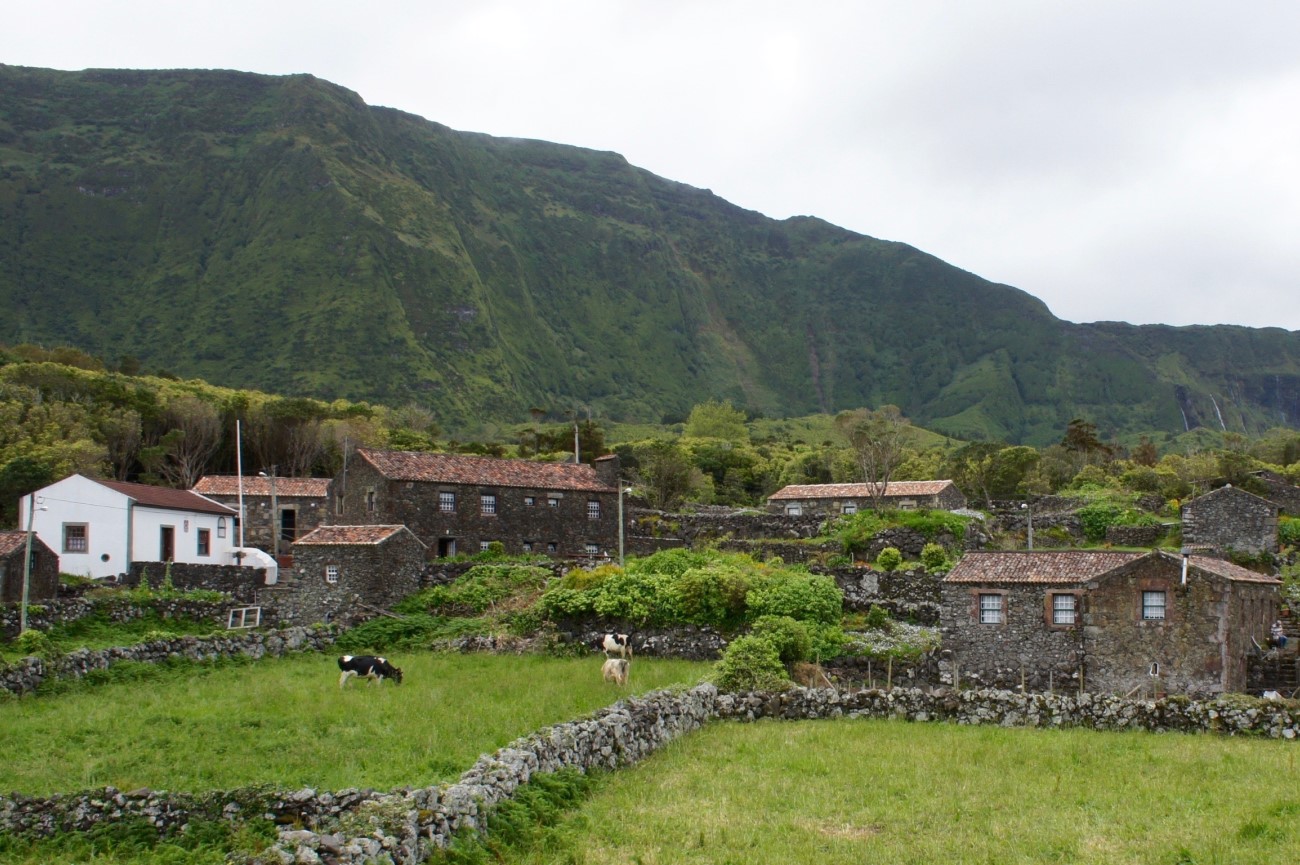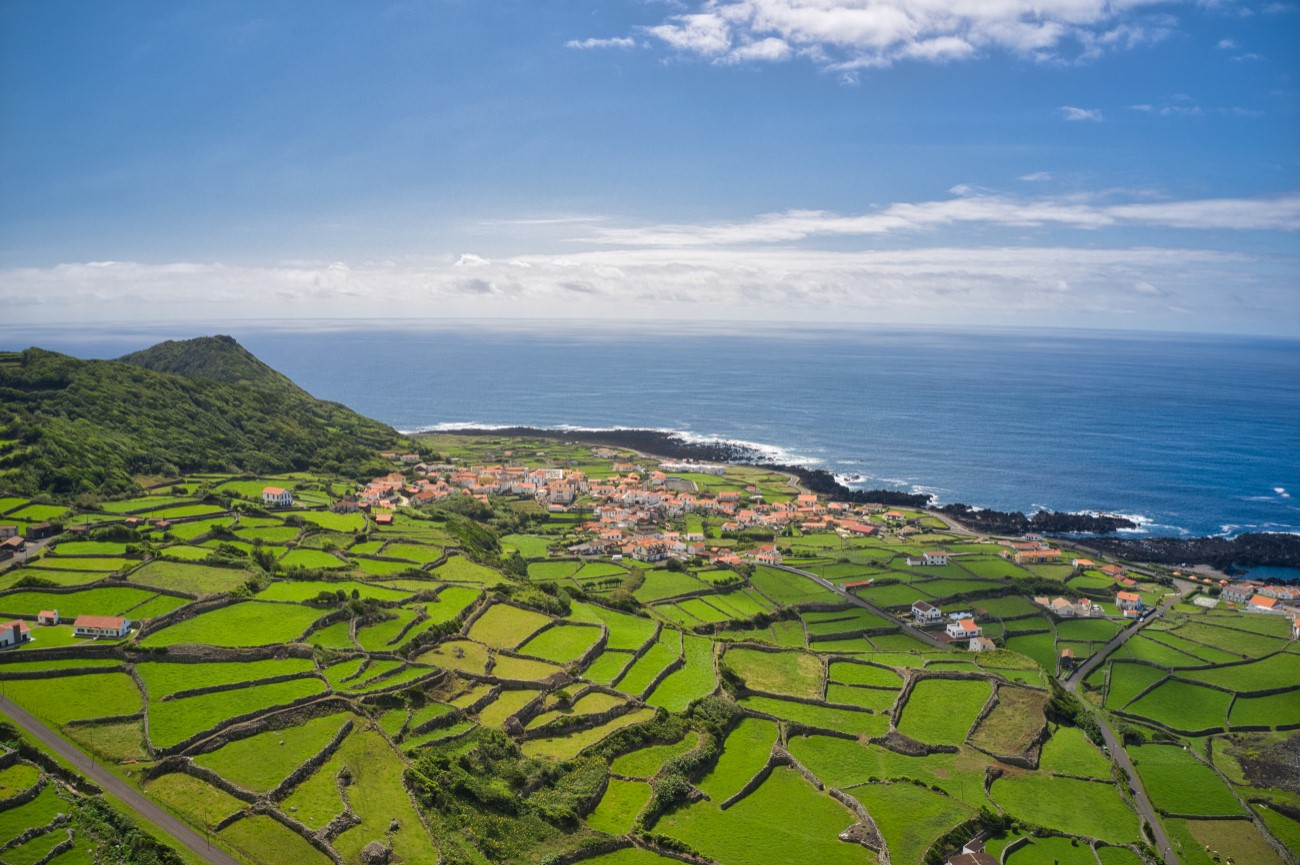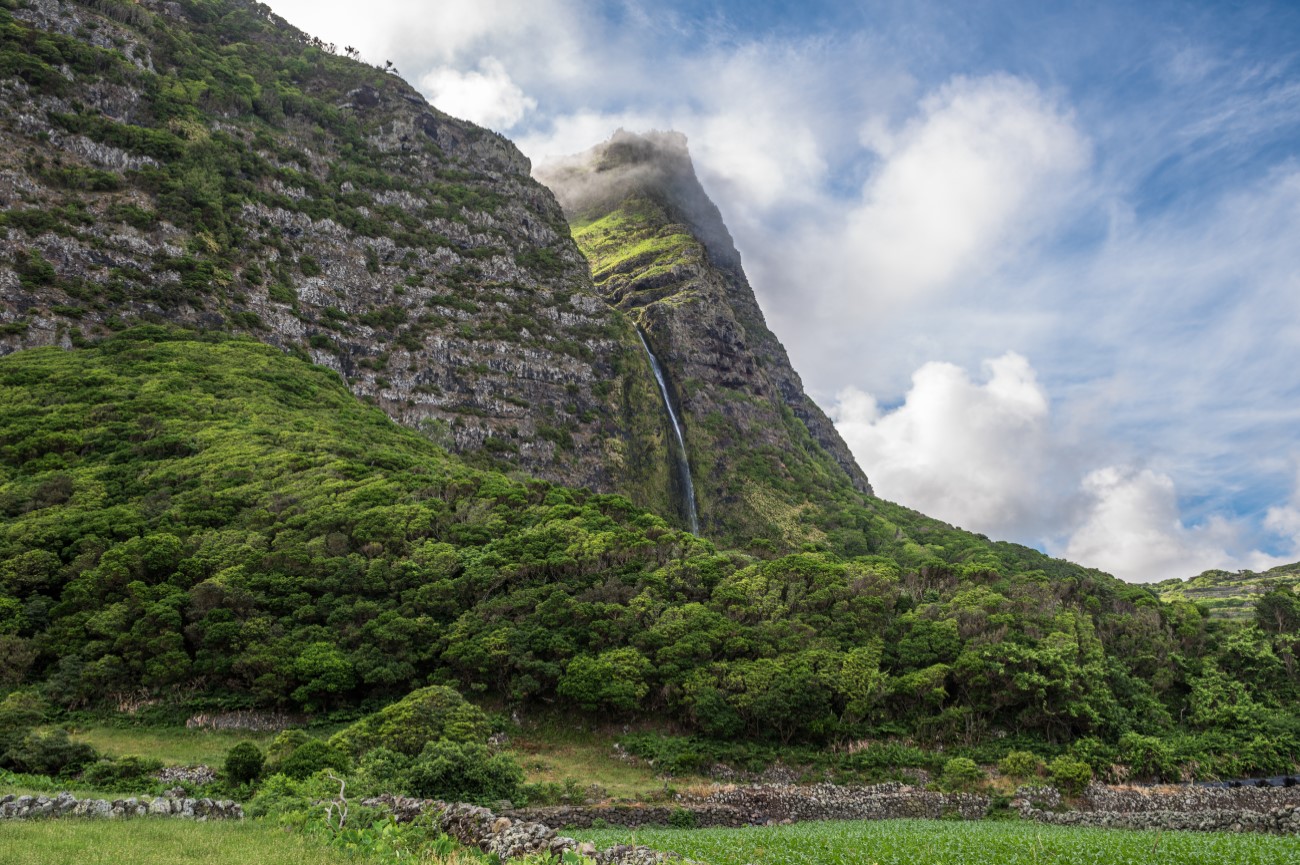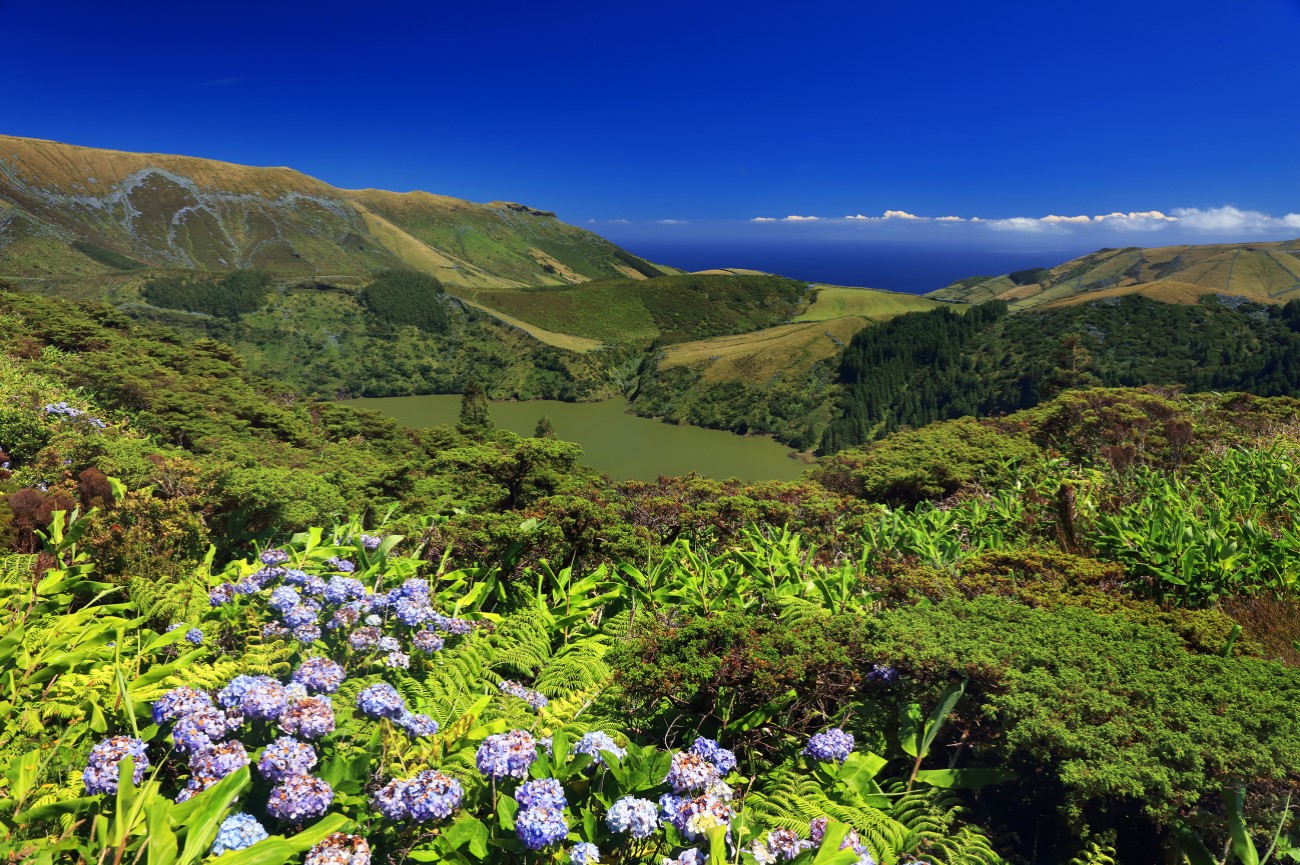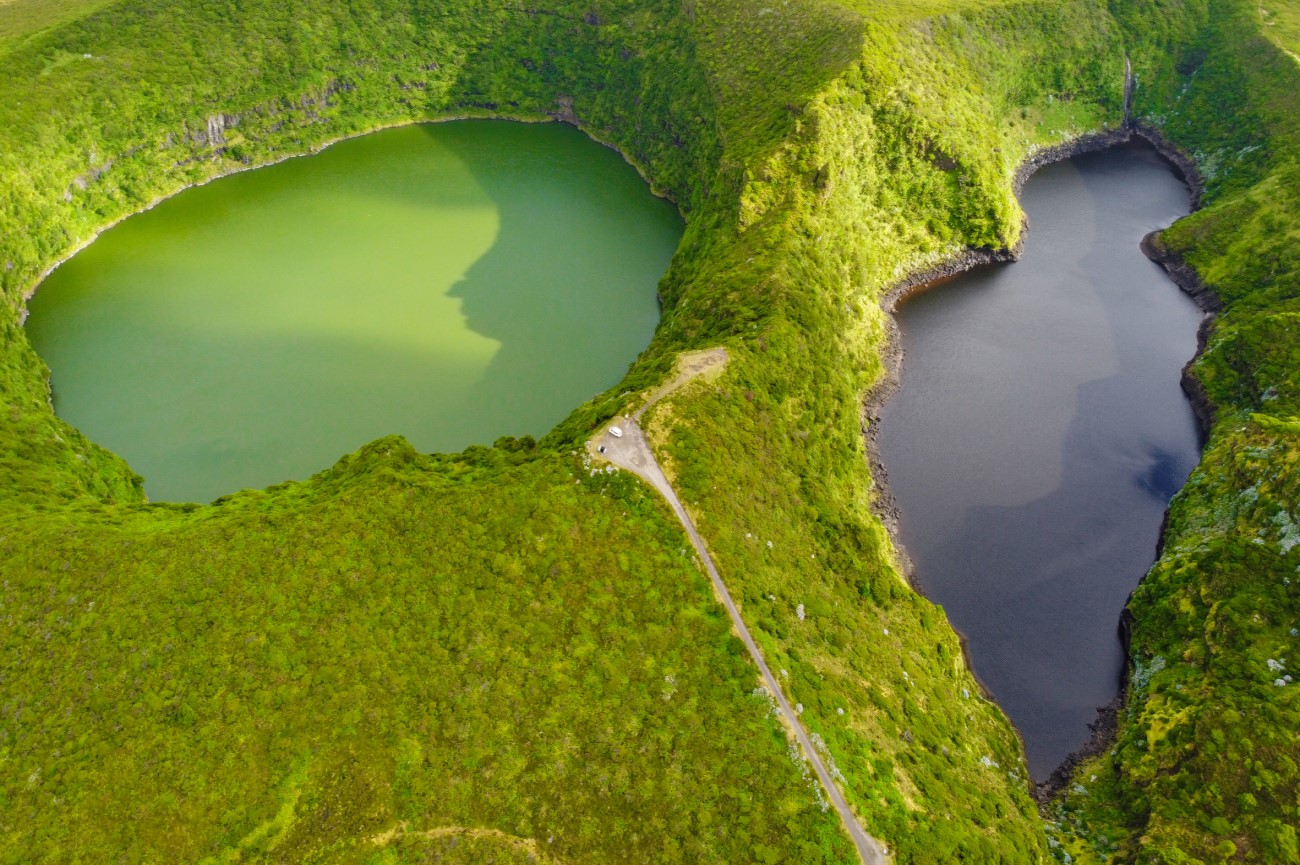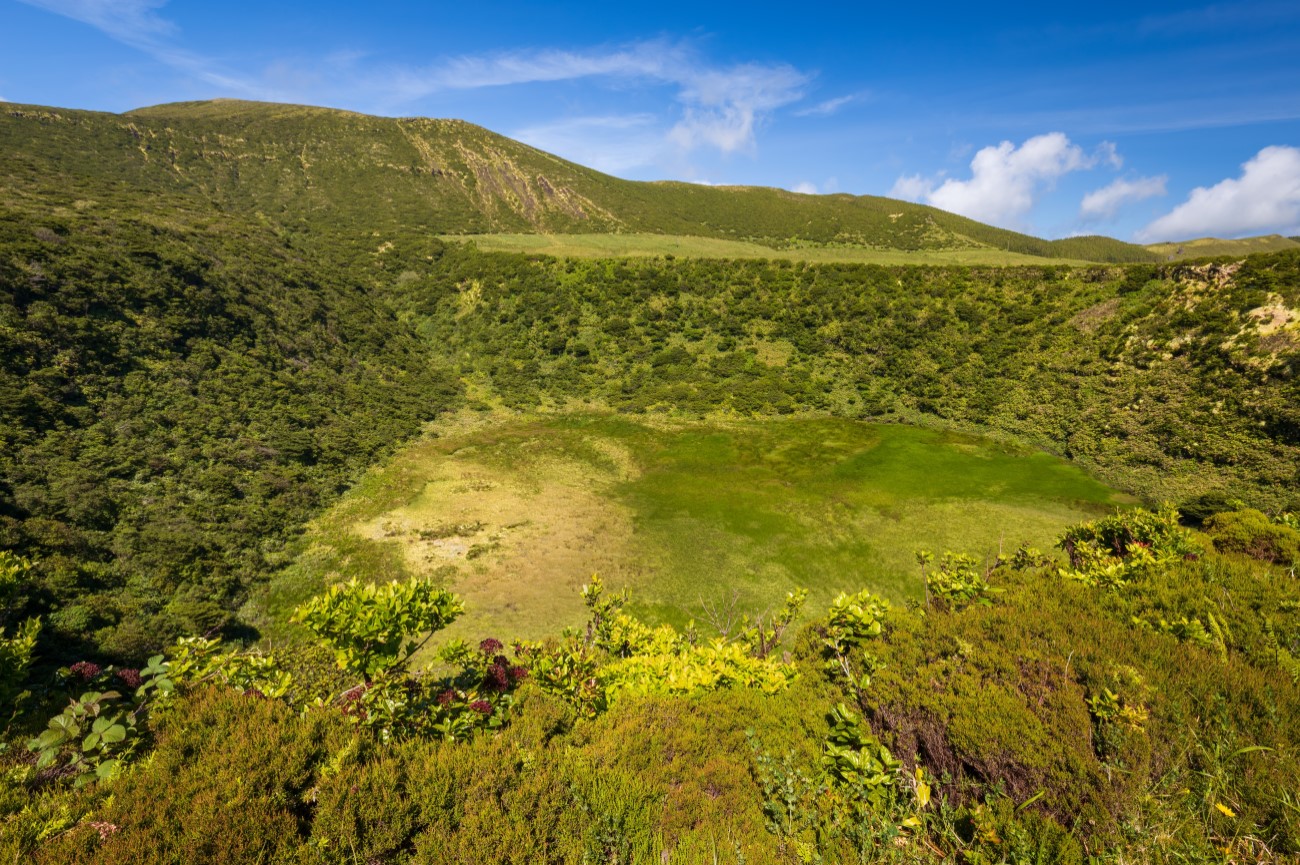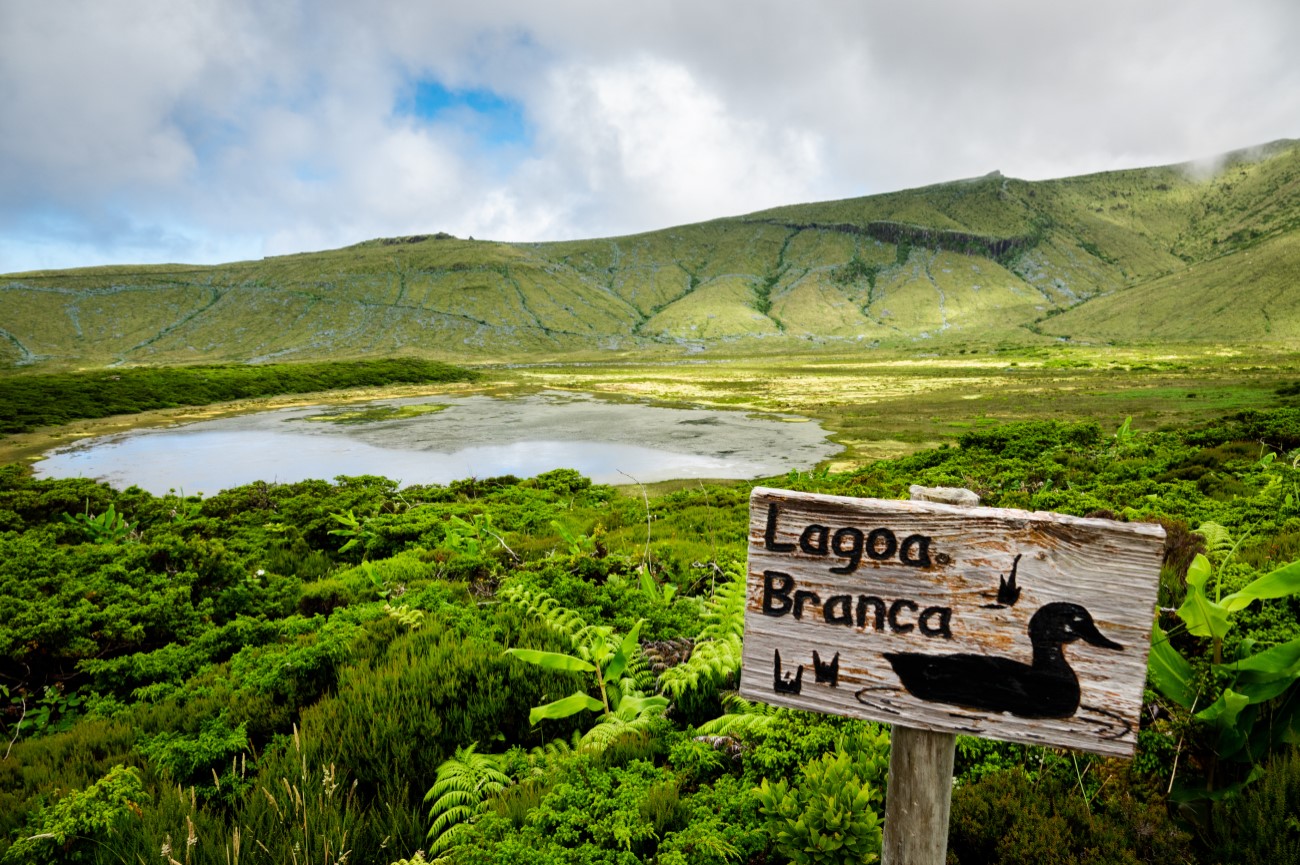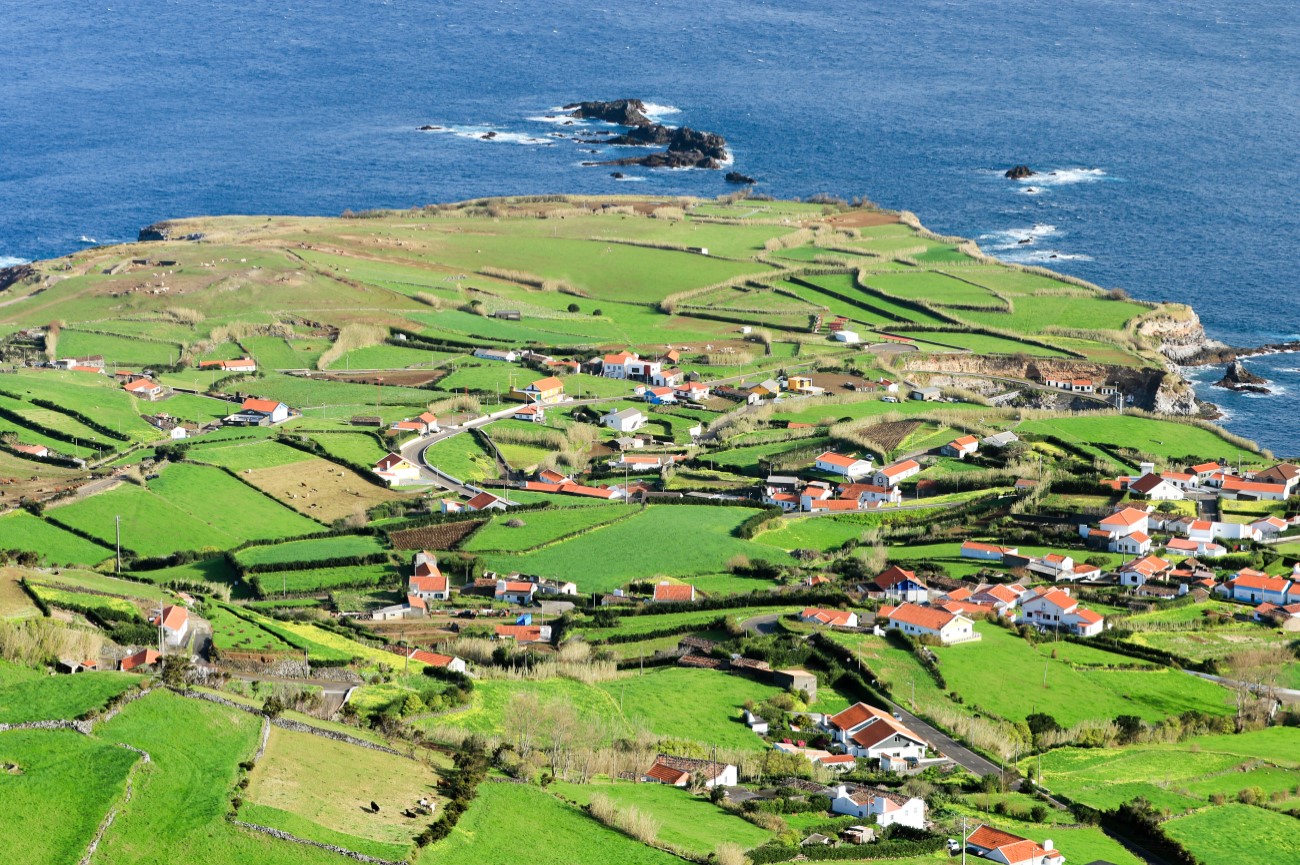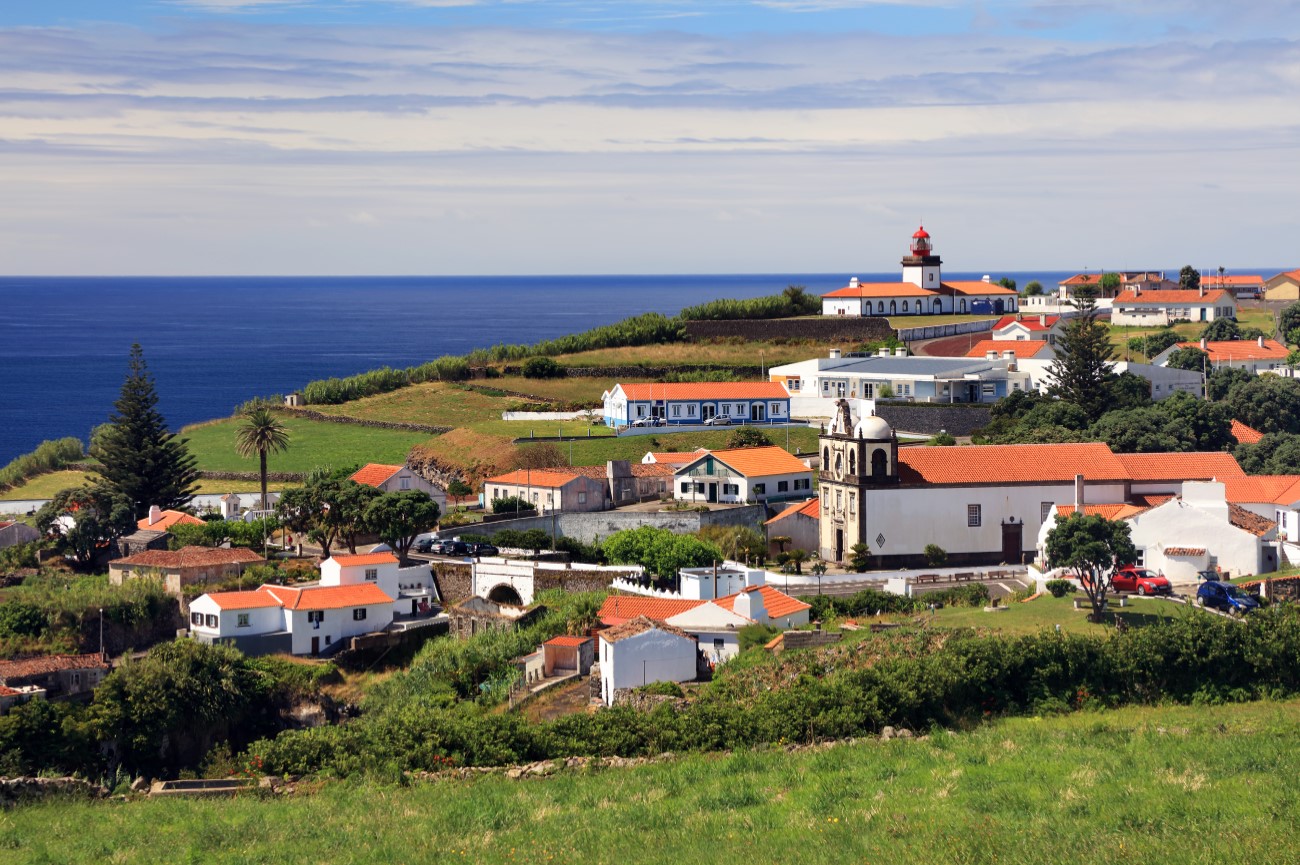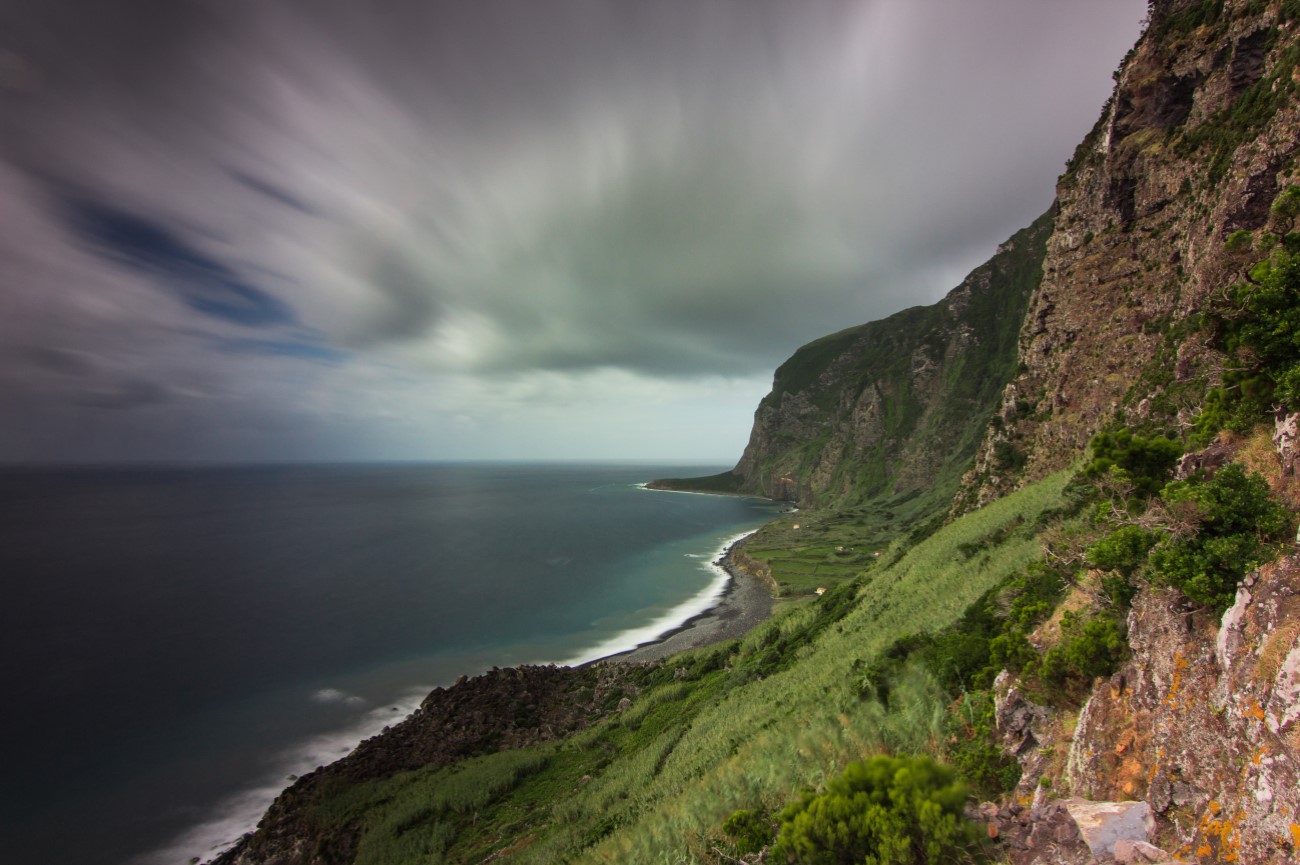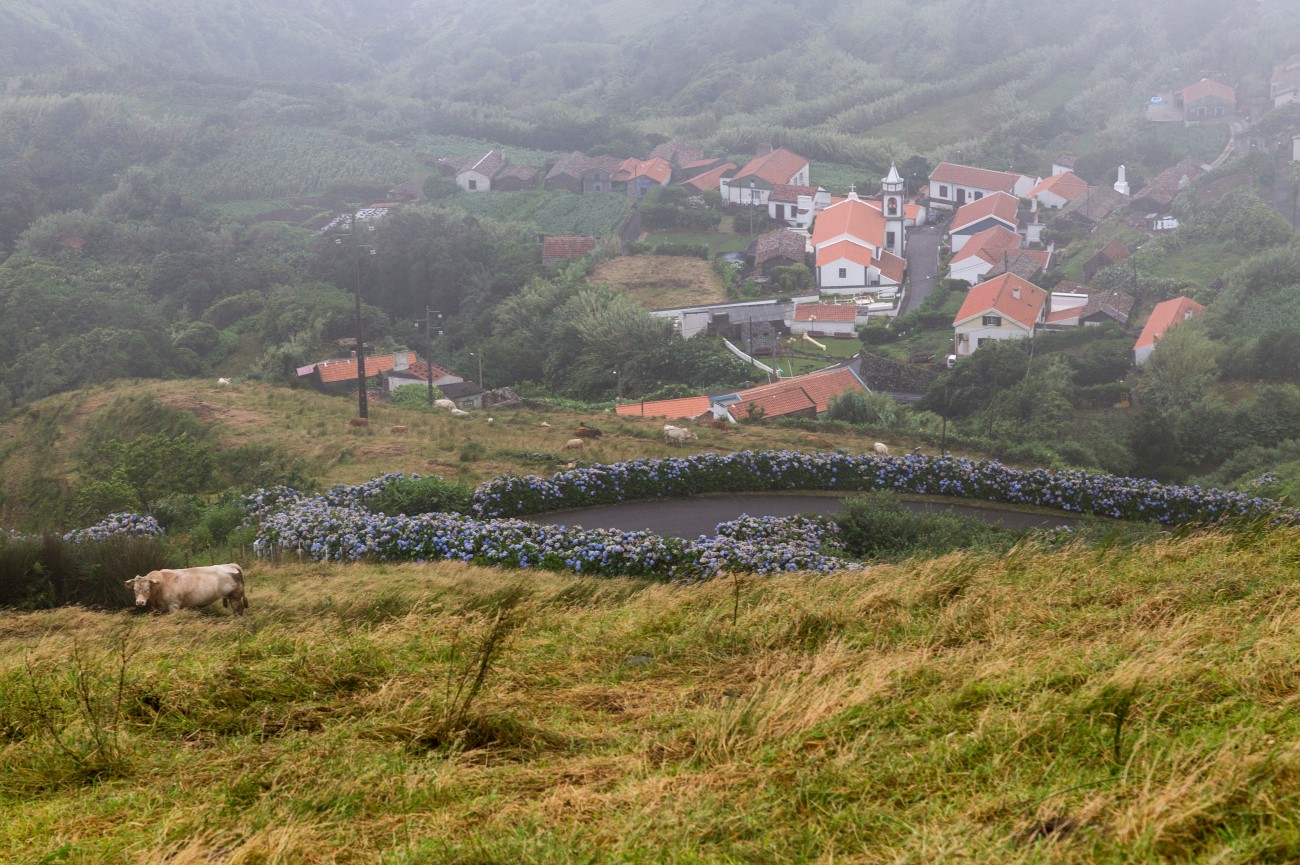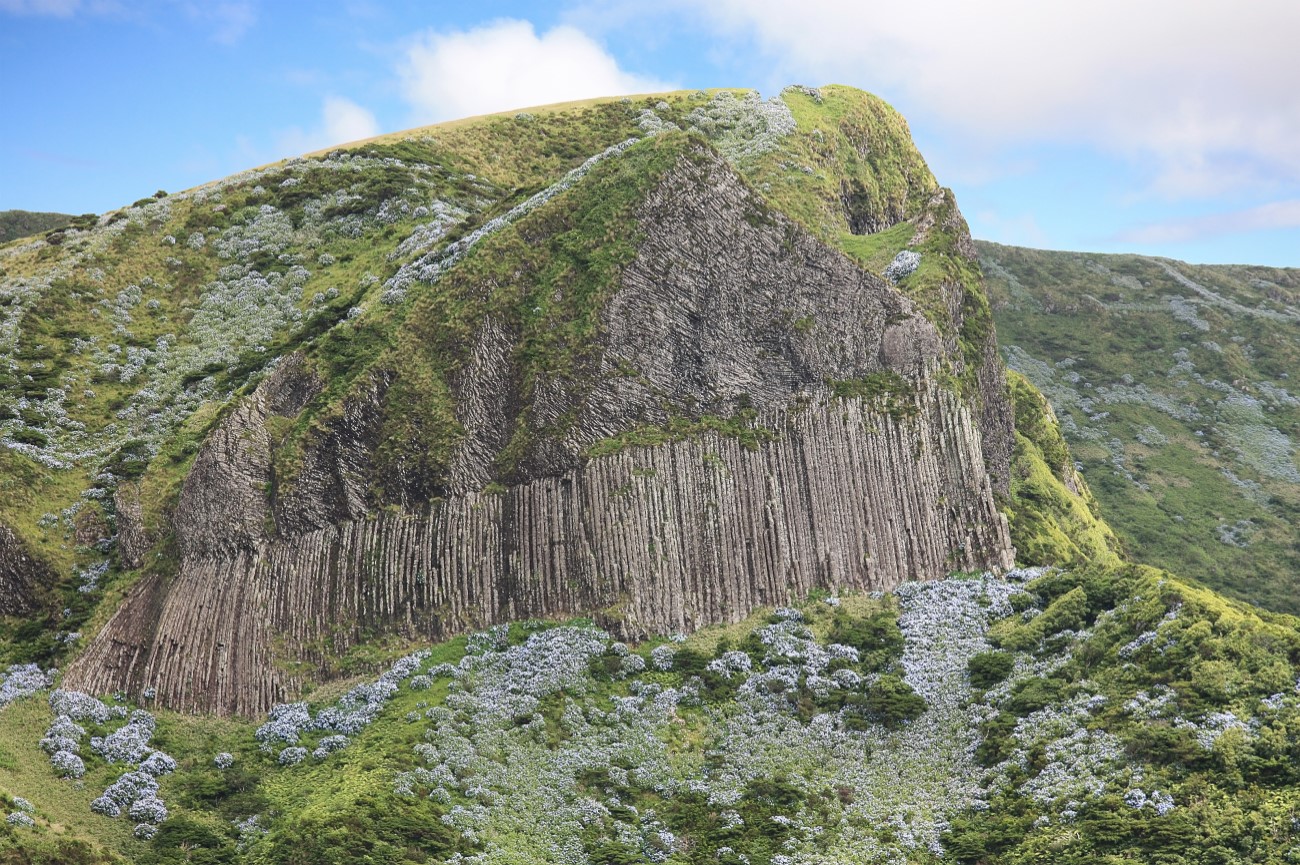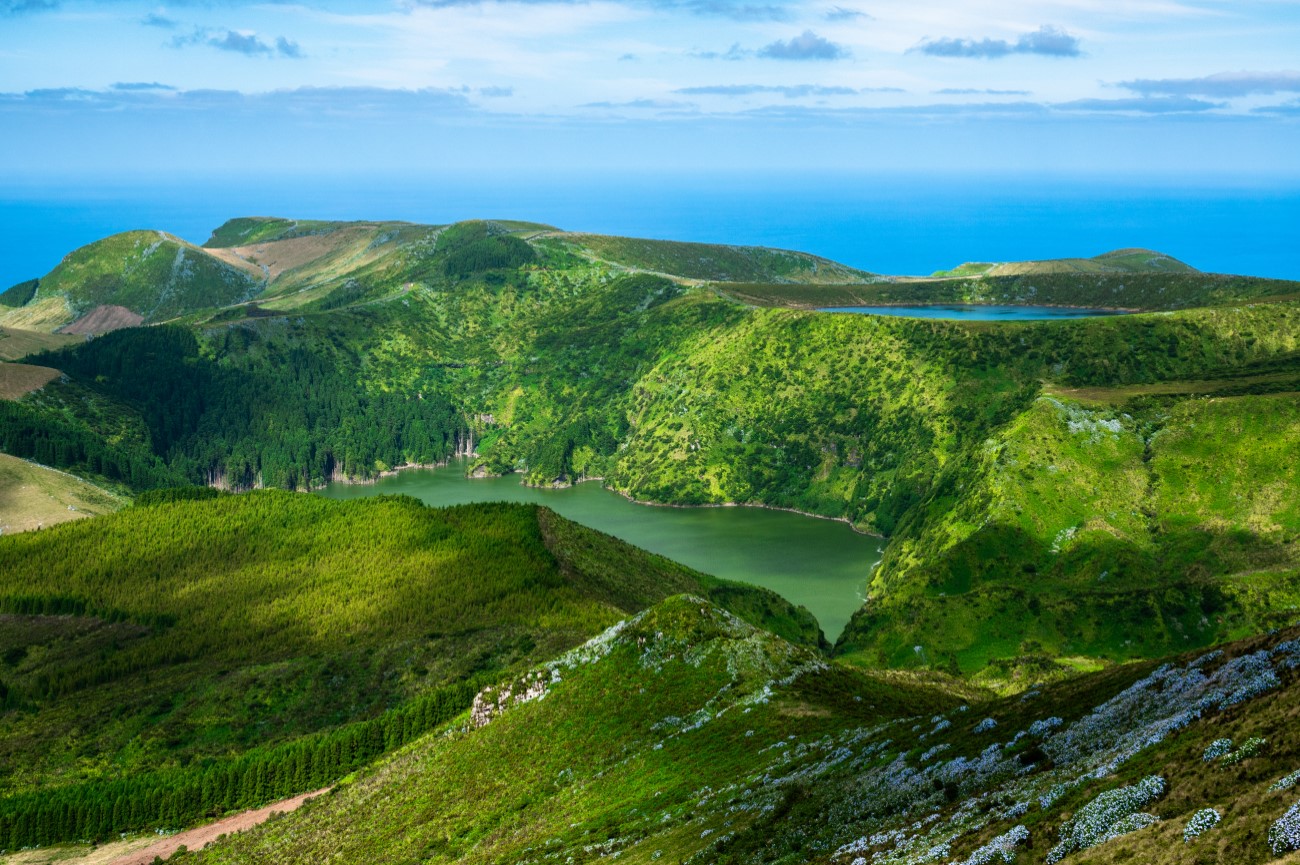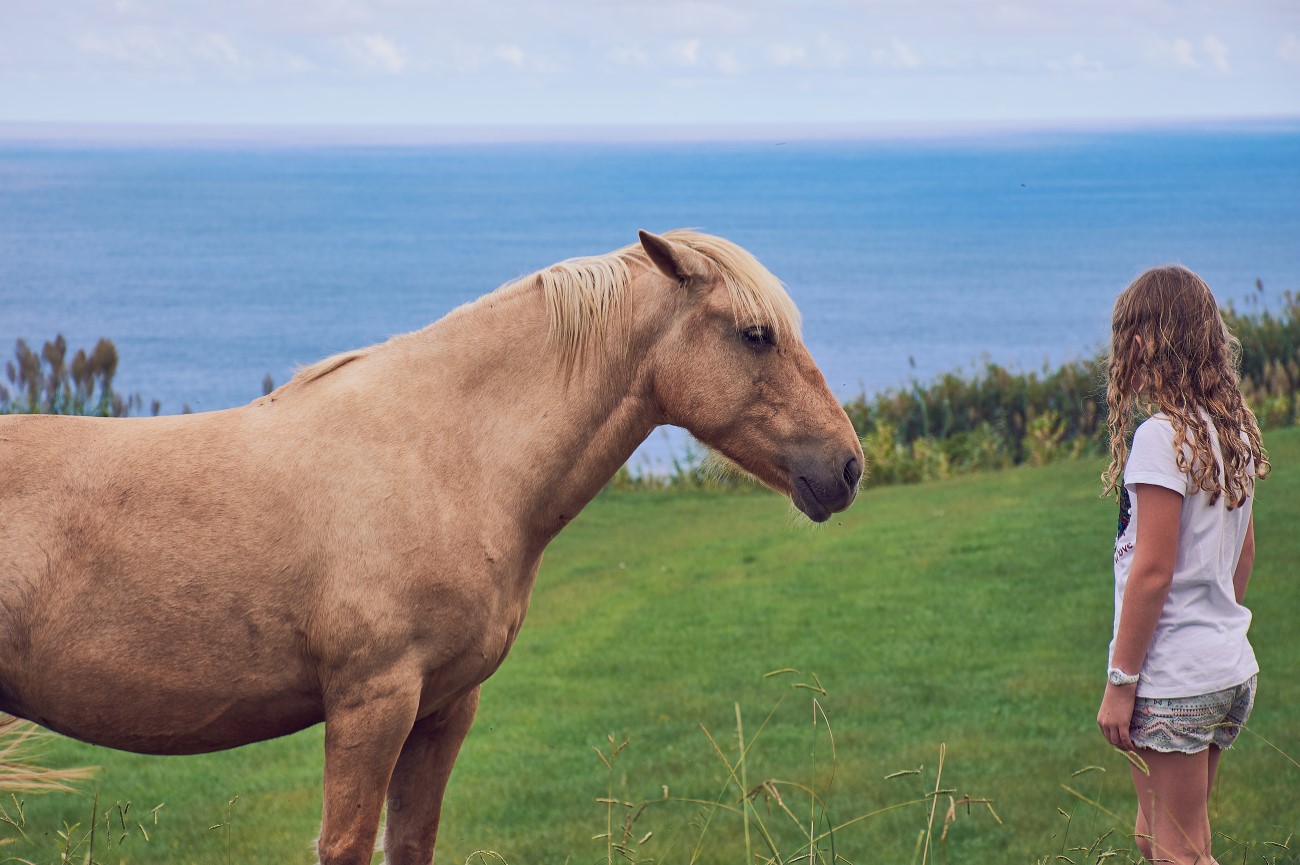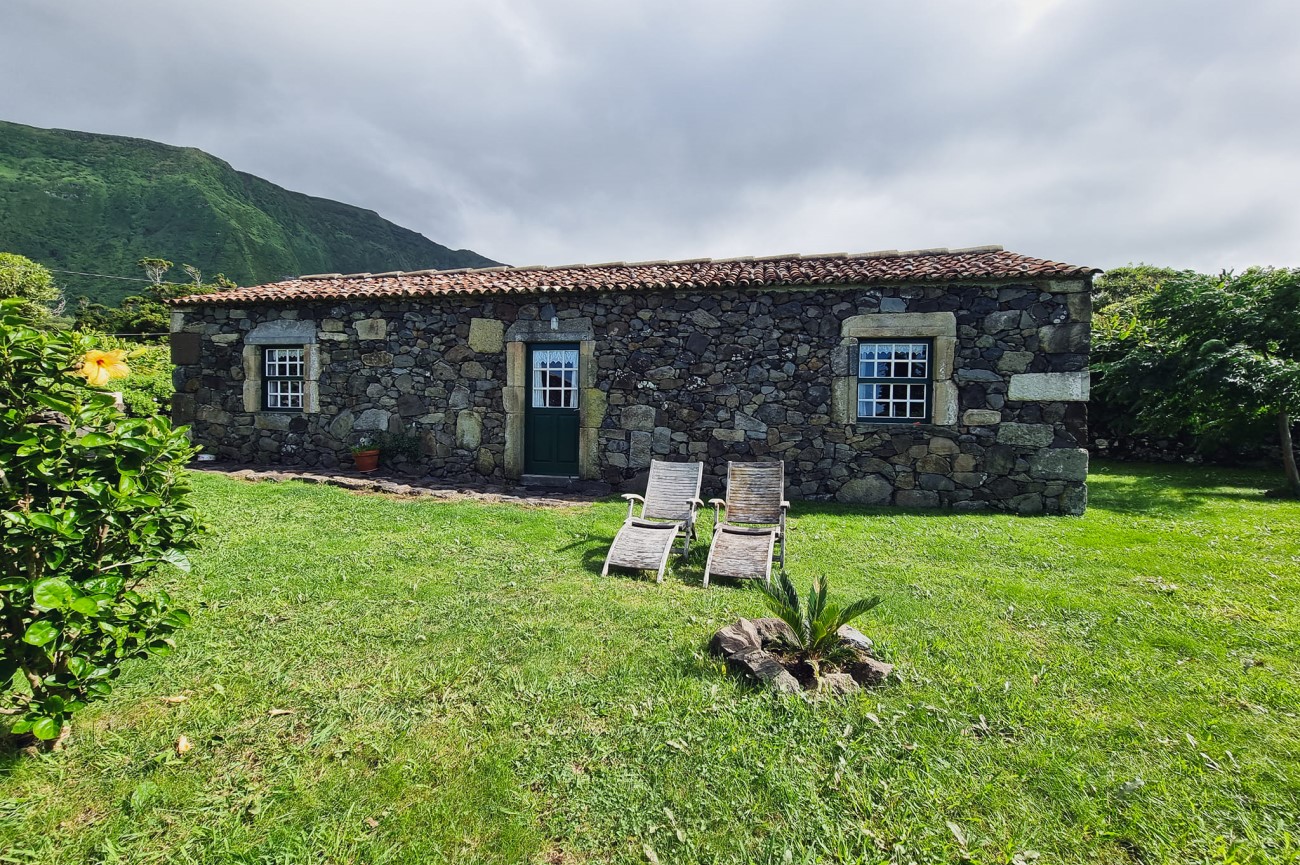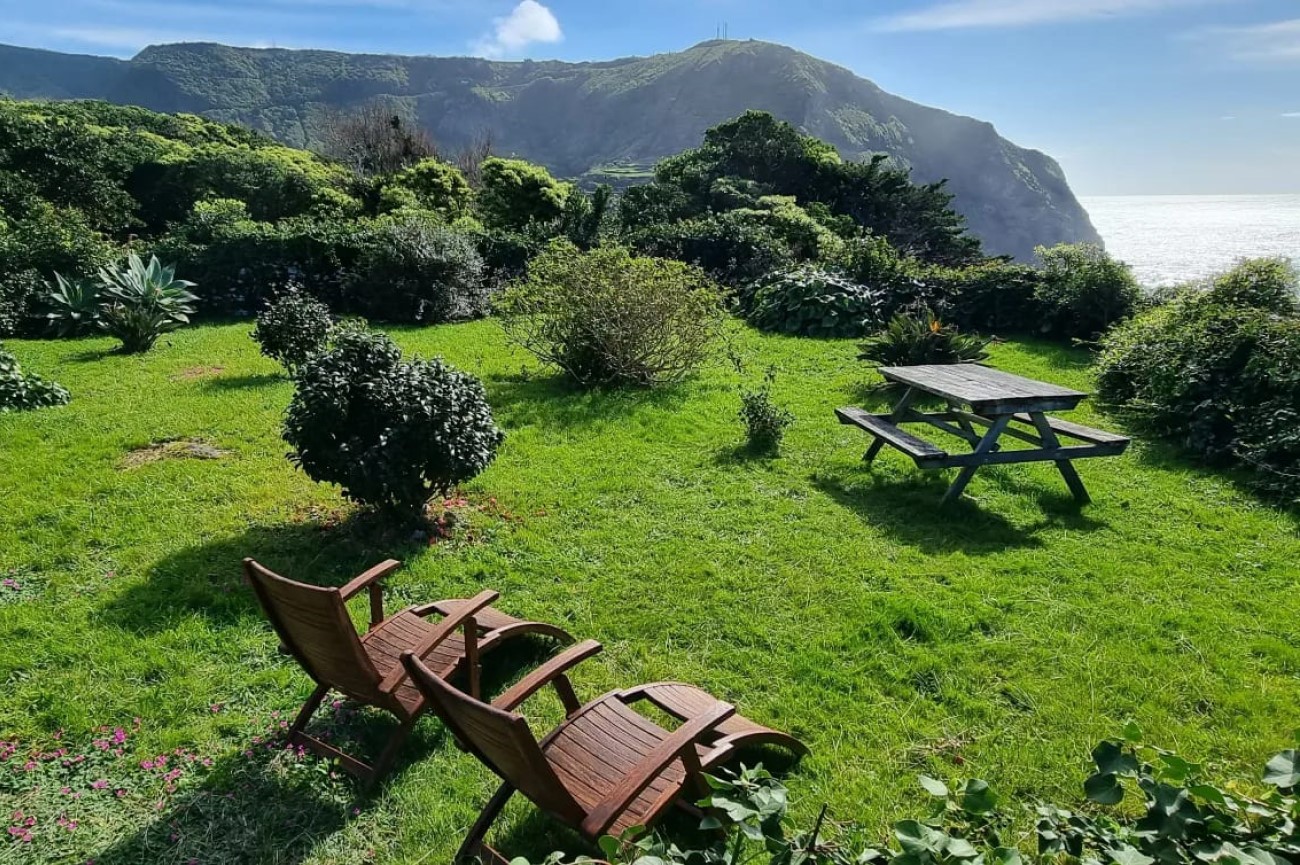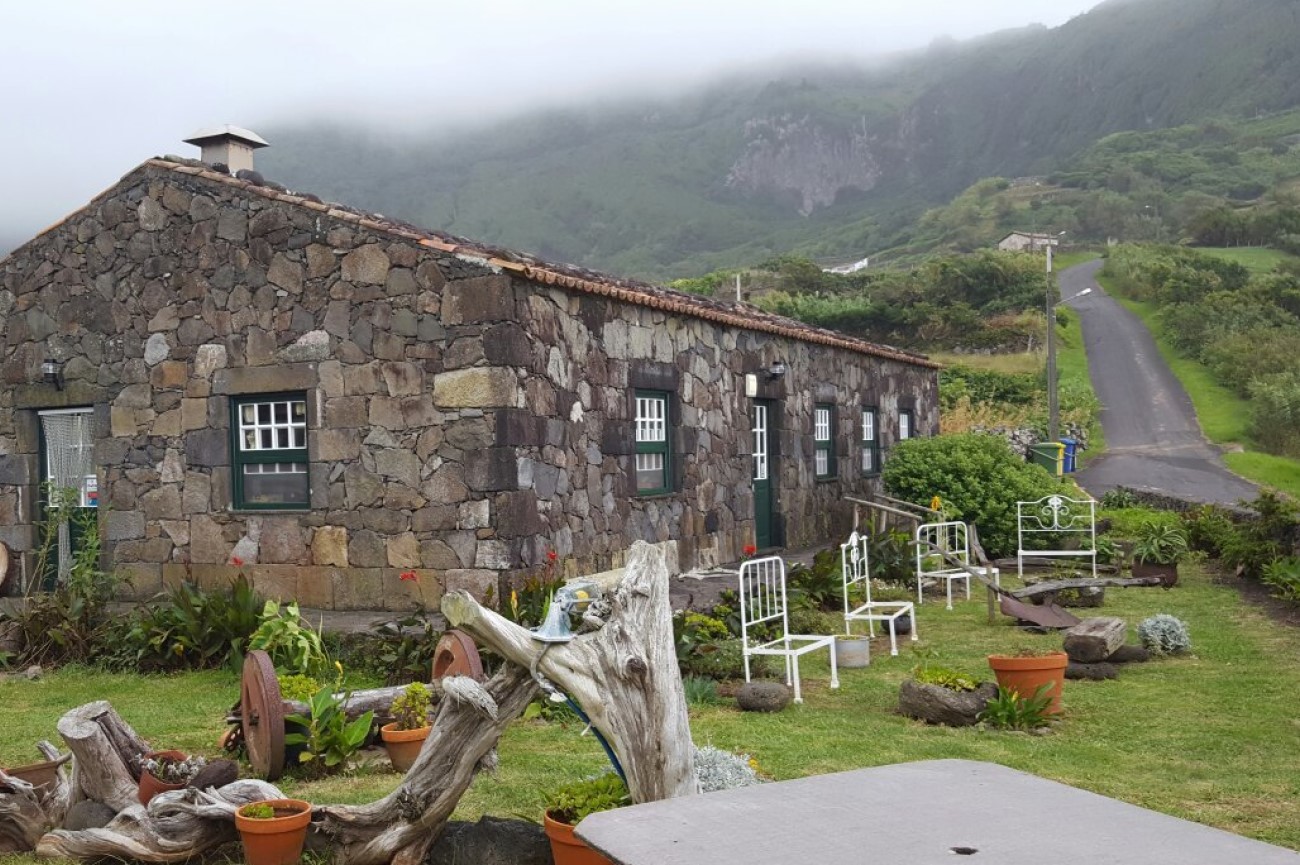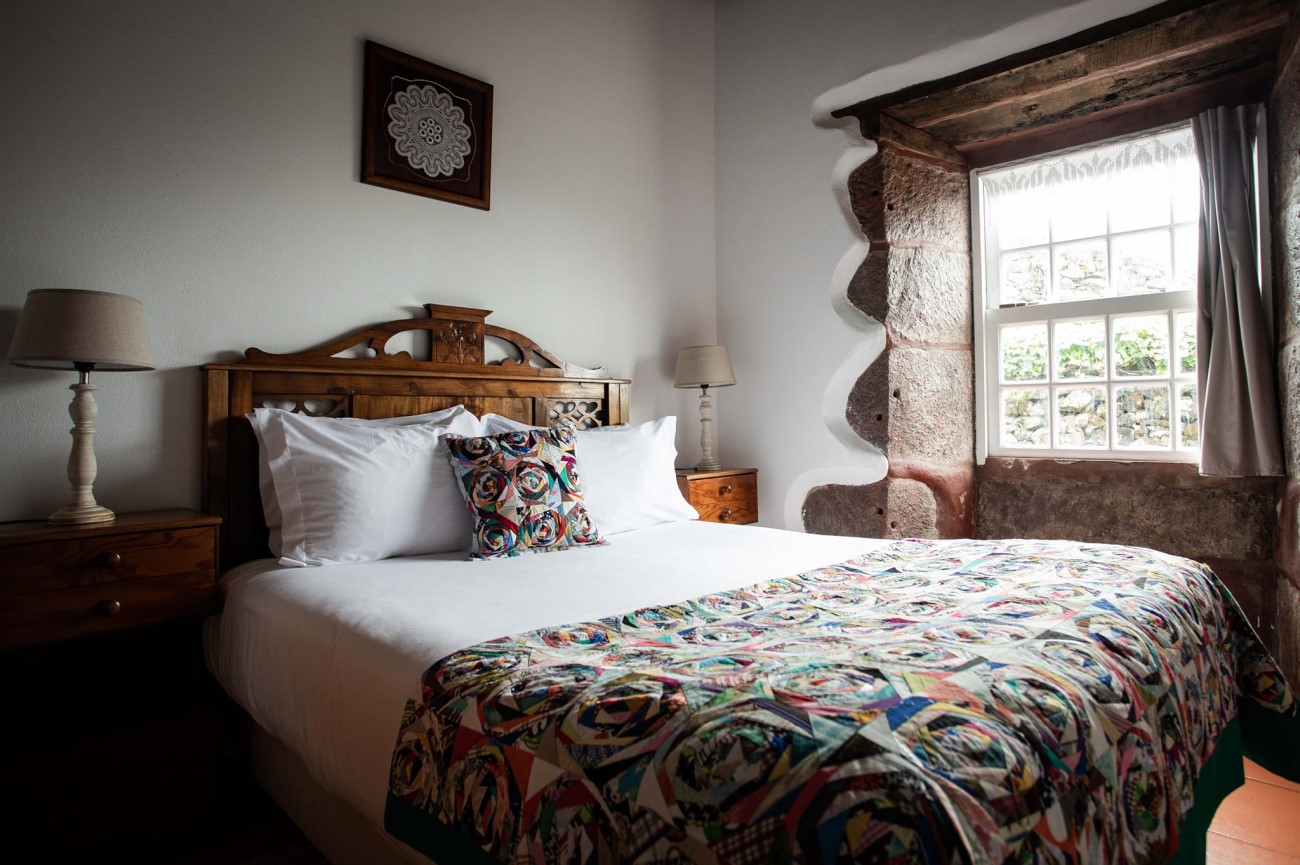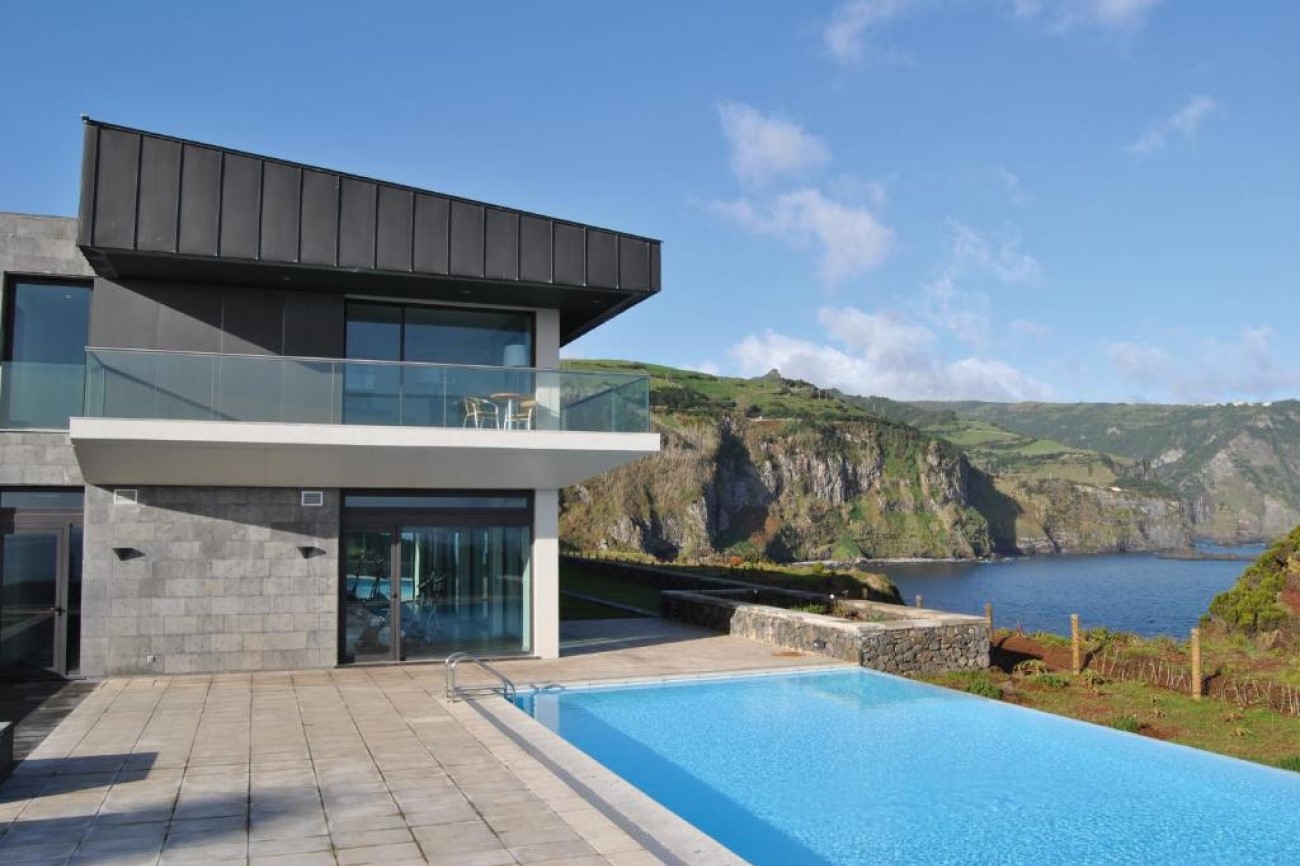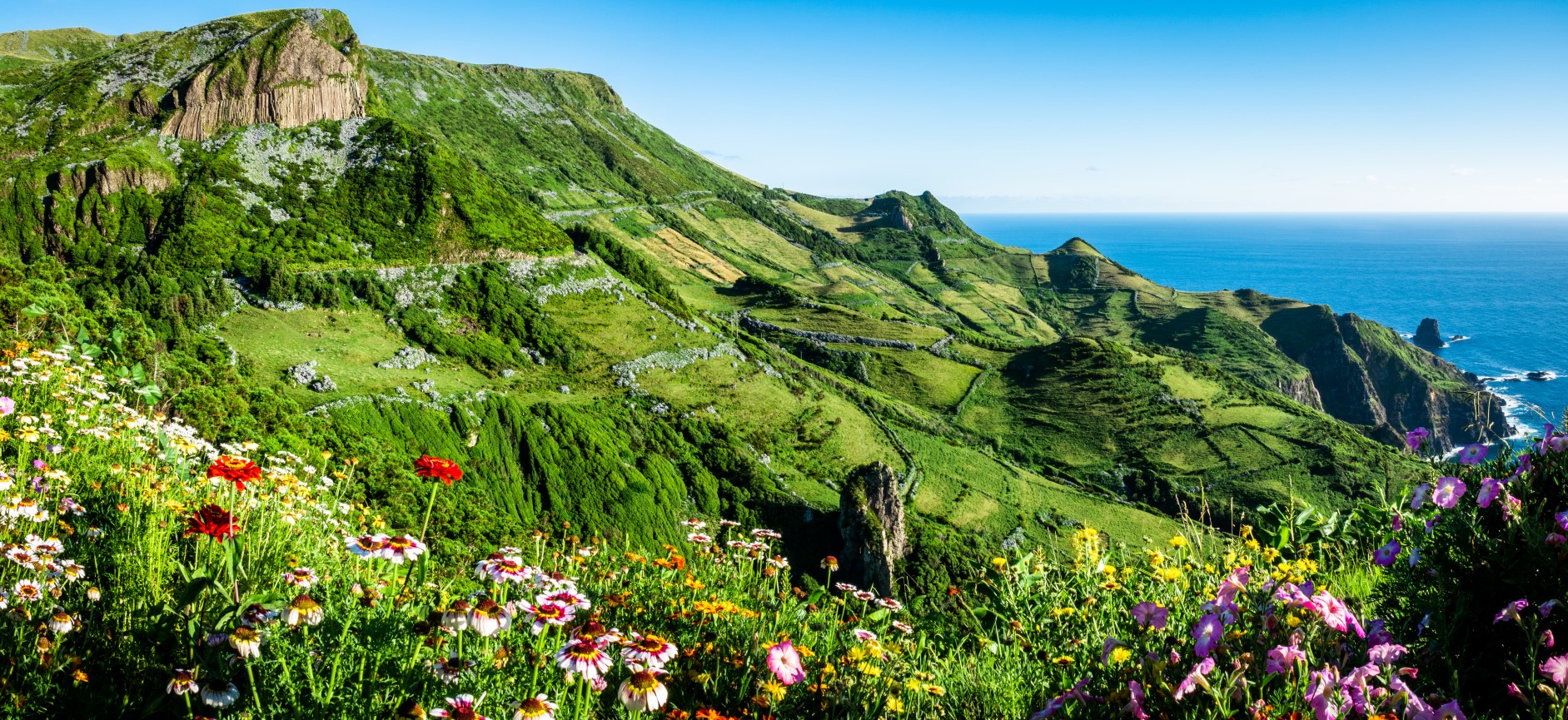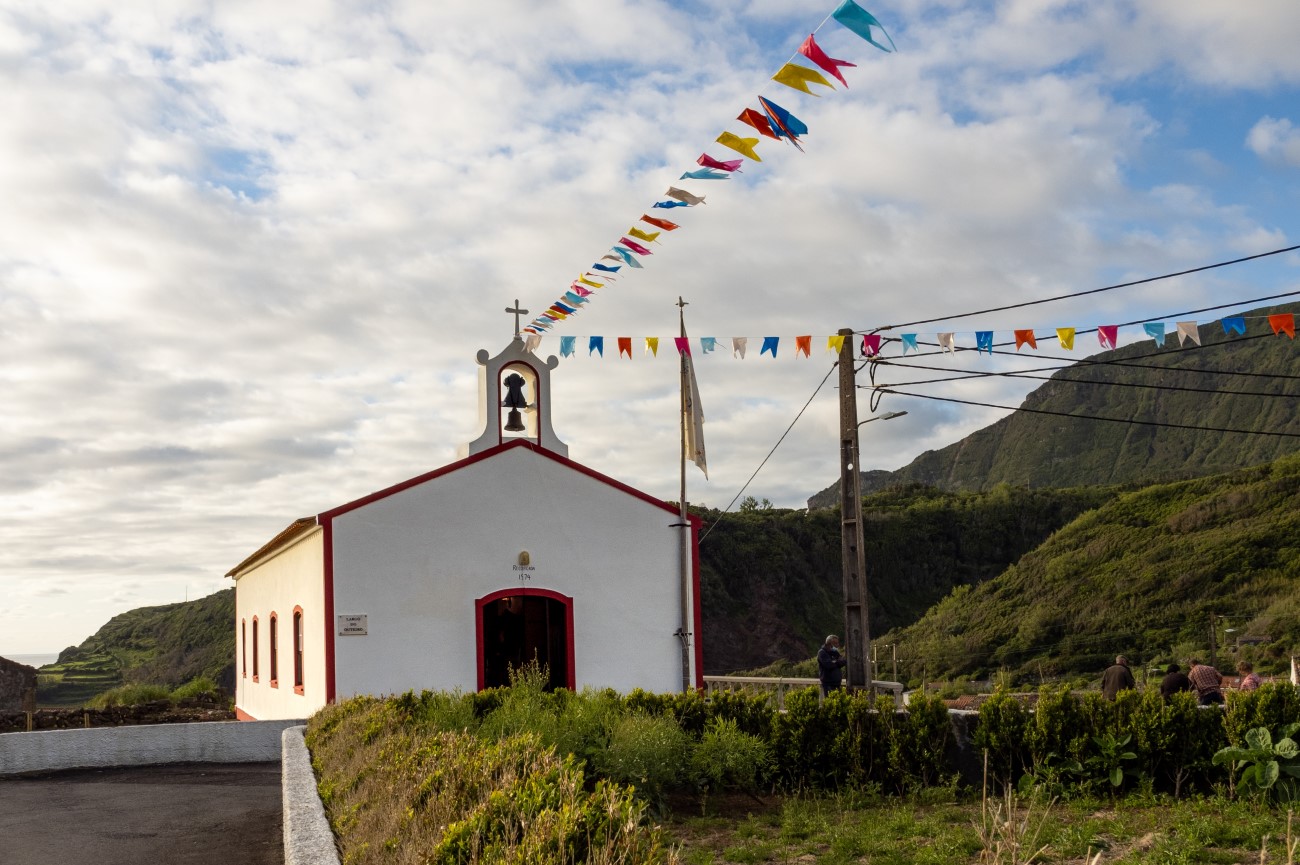Things to do In Flores Island, Azores: 3-day itinerary
Far in the western Azores, with only one other island nearby, lies the small but beautiful island of Flores. What Flores lacks in size, it makes up for in the richness and diversity of its landscape. A Unesco Biosphere Reserve since 2009, Flores is awash in rich green flora, crystal clear lagoons, and luxurious waterfalls.
When the hydrangeas bloom, you will discover a green island turned blue. Explore the various valleys and plateaus by taking a coastal hike, canyoning, mountain biking, or diving.
Our three-day itinerary will help you plan your trip to Flores Island. We’ve included highlights, restaurants, and accommodation.
Day 1 - West

Morning: Santa Cruz das Flores
Santa Cruz is the main settlement on Flores, and it is where you will fly in. Refresh yourself after the flight by taking a dip in the welcoming waters of the natural pools or stroll through town to see the sights. Make sure to stop by the Fábrica da Baleia do Boqueirão to learn more about the whaling industry here. Then continue along the road out of town to the village of Fazenda.
Here you can visit the Igreja de Nossa Senhora de Lourdes, a hillside church surrounded by white and blue hydrangeas.
Miradouro do Portal
Head to the west coast to experience some of the most dramatic views on the island. Here you can see the luscious green cliffs and seaside pastures of Flores fall into the ocean and frame the indigo seascape. You will also be able to spot Fajãzinha and part of the Fajã Grande. For another vantage point, try the Miradouro da Baía do Mosteiro offering equally fantastic views.
Fajãzinha
Continue up the road until you reach the small village of Fajãzinha. The centrepiece of this oceanside village is the church, the Igreja dos Remédios, from which you can also experience stunning views of the surrounding area. Wander the small streets and capture the white houses, kitchen gardens, maize fields, and seagrass prairies surrounding this quaint area.
Poço Ribeira do Ferreiro
A few minutes from Fajãzinha, keep an eye out for a plaque reading Ribeira do Ferreiro. There is a trail here to follow for about 30 minutes that takes you to one of the most unique and stunning places on the island. This verdant forest, with dense tree coverage and mossy rocks, is not to be missed.
Afternoon: Aldeia da Cuada
For a taste of a typical Azorean village, make sure to visit Aldeia da Cuada. This village was recovered by a couple from Pico Island who saw the beauty in the abandoned settlement and transformed the stone houses into a spot for rural tourism.
Fajã Grande
For a summer getaway with the locals, drive up to the community of Fajã Grande. Although this is a rural community of only about 200 people, it is where islanders like to spend the summer. Off the coast of Fajã Grande, you can spot the Ilhéu de Monchique, a small uninhabited island that is the westernmost part of Portugal. Look around at the cliffs surrounding this village, and you will find cascading waterfalls and dramatic scenery.
Poço do Bacalhau
You’ll find this impressive waterfall close to Fajã Grande. At 90 metres high, the Poço do Bacalhau sends water falling from the cliffs into an emerald green lagoon.
Day 1 - West Flores Tour Map
Day 2 - Centre

Morning: Morro Alto
Begin the day on the highest point of the island. At 914 metres high, Morro Alto can be windy, but on a clear day, the views of the island are unmatched.
Lagoa Escura and Lagoa Comprida
Make your way down the mountain towards the viewpoint of these lagoons. From here, you can see the two lagoons side by side, surrounded by green hills. If you’d like to see them up close, you can follow the PR3FLO walking trail, which connects these lagoons to the Poço do Bacalhau.
Lagoa Seca and Lagoa Branca
Another two lagoons you can see are Lagoa Seca and Lagoa Branca. Lagoa Seca is usually dry but fills with water when it rains. Its teardrop shape is encompassed by hillsides full of trees and forest.
Afternoon: Ponta Delgada
Take your time heading north, and admire the views along the way. On this side of the coast, you will come across the settlement of Ponta Delgada. Enjoy fresh fish and seafood here or look across the water at the incredible views of Corvo Island. For more breathtaking coastal views, continue towards the Farol de Albarnaz, a lighthouse on the northern edge of the island.
Day 2 - Central Flores Tour Map
Day 3 - South

Morning: Lajes das Flores
This small settlement is one of the main cities on the island of Flores. Meander through the village streets to the port, a church, and a lighthouse that juts out into the sea.
Fajã de Lopo Vaz
One of the first places to be inhabited on the island, this coastal plain is now unoccupied. Follow the PR4FLO trail around the area to see all the highlights and best views. If you’re lucky, you might meet some wild goats along the fajã. This is a descending trail down a hillside, so be sure to pay attention to falling rocks on the way. At sea level, there is a black sand beach, a water fountain, and an old house. This is a popular spot for birdwatching, and if you pay close attention you will see species such as the Common Blackbird and the Common Chaffinch. You will also find bananas, figs, and grapes growing here.
Lajedo
If you’d like to separate yourself from the world a little bit and take a peaceful break, continue on the road to Lajedo. This is a small village that overlooks the Atlantic Ocean and offers a real peek into the rural Azorean lifestyle.
Afternoon: Rocha dos Bordões
Like most islands on the Azorean archipelago, Flores is also a geological treasure. A short distance from the road, Rocha dos Bordões stands out because it is a mountainside covered in tall, well-preserved basaltic prisms. There is a viewpoint near Mosteiro from which it's easy to see this geological wonder.
Miradouro Caldeira Rasa e Funda
If the sky is clear, you can’t miss the Miradouro das Lagoas Rasa e Funda. The lagoons you can see from here are some of the most difficult to witness because of the constant fog surrounding them, but when it lifts, the views are phenomenal. Nearby you can also visit the Lagoa da Lomba, one of the smallest lagoons on the island.
Day 3 - South Flores Tour Map
Top things to do with kids in Flores
There are many things to do as a family while visiting the Flores island. Kids will love swimming at the natural pools of Santa Cruz or spotting waterfalls like the one at Poço do Bacalhau or Poço Ribeira do Ferreiro. For a look into the traditional rural lifestyle of Azores, make sure to stop by Aldeia da Cuada or Lajedo. Finally, don’t miss the viewpoints overlooking the stunning natural scenery and the numerous lagoons that you can spot along the island’s walking trails.
Where to eat in Flores
- Aldeia da Cuada: Surrounded by nature, this famous accommodation also offers a restaurant that is open for guests and non-guests. The menu includes a mix of meat and fish dishes made with locally-sourced ingredients. You can also pair your meal with an Azorean wine. Best to reserve ahead.
- Pôr do Sol: This restaurant near Fajãzinha serves traditional dishes from the Azores. The friendly staff will gladly recommend you a meal.
Where to stay in Flores
- Aldeia da Cuada: The once abandoned village of Aldeia da Cuada has been transformed into a relaxing rural escape. A 20-minute drive from the airport, it features rustic stone-built houses with one to four bedrooms. They come with a kitchen, oil heater, wood furnishings, barbecue, and private garden. Some even offer sea views.
- Inatel Flores: Located out in nature, among the lagoons that dot the island, this hotel offers 26 rooms for guests. It also includes a fully equipped bar, swimming pool, meeting room and private parking.
- Casas da Cascata: This is a family run business located in Fajã Grande. There are seven houses for rent, and each differs from the others in size and features. All are equipped with a kitchen, bedrooms, bathrooms and living room. There is a barbecue area with sea views and other common outdoor spaces.
Best time to visit Flores
For longer days, clear skies, and blooming hydrangeas, visit Flores in July and August. April, May, and September are not as warm but may also be good options. Avoid June as it is known for bad weather and cancelled flights.
Flores festivals
- Festa do Emigrante: Usually held in July, this festival celebrates those who have left the island and moved elsewhere. Many emigrants come back to visit and join the annual celebrations.
- Festas do Espírito Santo: The festivals in honour of the Holy Spirit take over the Azores, and Flores is no different. These parties are held between May and September, with especially colourful decorations in Santa Cruz, where flower arches fill the streets.


